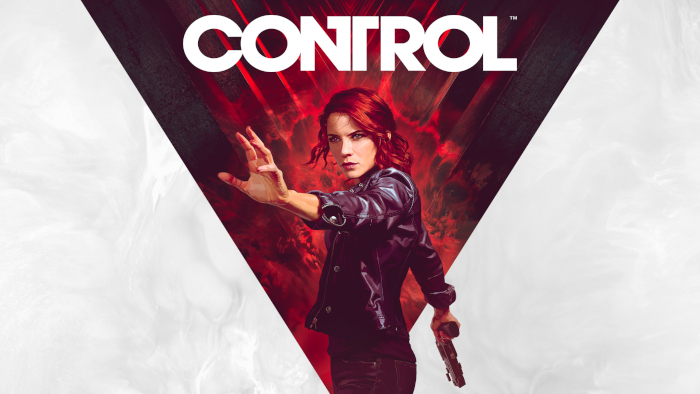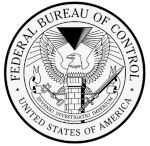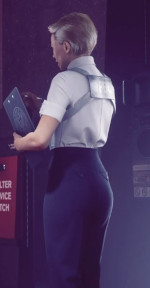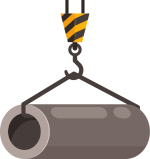The Plot of Control
In this post I am going to provide a chronologically ordered synopsis of the primary plot thread of Control. It should go without saying that this will be a complete synopsis, so massive, huge, bright-red blinking SPOILER ALERT!

If you have not played Control or are not familiar with this game, it is a third-person shooter developed by Remedy. The game has received high praise for its incredible graphics, being one of the first to earnestly leverage nVidia's RTX ray-tracing capabilties and DLSS AI performance upscaling. It is, without question, a beautiful game.
Control's combat revolves around a collection of unlocked abilities and form-swapping primary weapon, though the depth of combat is not necessarily one of the game's strongest selling points. Combat and game mechanics are fun and remain entertaining throughout, but it is not (and does not attempt to be) a game with a Dark Soul's level of combat detail or complexity.
Most fascinating to me, however, is the mixed reception to its story. Not so much from people who dislike the story, but rather, the number of people who claim the game has no story, or that the story is illogical or lacking in nuance or depth. This is a bit surprising to me because the story of Control is, in my opinion, its absolute best feature. Better than even the graphics, the plot of Control was one of the better video-game stories I've experienced in a long while.

Now, I can completely understand people who simply don't like the story. It is a world based on the surreal supernatural ideals of the SCP, the X-Files, Twin Peaks, and Stranger Things, to name a few obvious inspirational sources. And without question, that is not a style everyone is going to enjoy. Art is subjective, after all. But to dismiss the existence or depth of its story entirely is a confusing stance for anyone to take.
So, to clarify and codify both the existence and depth of the story of Control, I'm providing a complete synopsis of the primary plot thread weaving through the game. Again, MASSIVE SPOILER ALERT. Further, I should also mention that the world of Control is directly connected to, and part of the universe of, other games Remedy has produced; namely, the Alan Wake series. To this day I haven't played these games and I know nothing about their world or story, so I cannot speak to any connections that exist. I can only say with certainty that the plot of Control stands completely on its own and familiarty with these other titles is absolutely no requirement to fully enjoying this game.
Finally, I have done no research. The synopsis presented here is solely from what I remember about my playthrough of the game along with a few trips to the wiki for pretty pictures and to make sure I was getting names and spelling correct. If anything I say is in conflict with more learned sources it's most certainly me who is incorrect. Oh, and for good measure, one final time...
SPOILER ALERT! COMPLETE GAME SYNOPSIS

PROLOGUE
This information is uncovered throughout the game through exploration and various cutscenes, lore objects, etc.
Jesse and her brother, Dylan, are part of an altered world event (AWE) involving objects of power (OOP) that occurs in the town of Ordinary while they are children. There are multiple effects, but the primary impact comes from the use of an object (a slide projector) to travel between dimensions/realities. As part of this event and the children's exploration of it, hostile entities eventually threaten our reality. A benevolent entity from one of the explored dimensions attaches itself to Jesse and her brother in an attempt to help defend our reality from this threat.
Researchers from the Federal Bureau of Control (FBC) learn about this AWE. They find and attempt to contain the objects from Ordinary in order to study the event that occurred there in accordance with the overall directive and purpose of the FBC. As part of these efforts they manage to capture Jesse's brother but do not capture Jesse. As Jesse grows and learns to cope with the events of her childhood she eventually sets out to find and rescue her brother from the FBC. During this journey she is in constant communication with the benevolent entity in her head that crossed over into our reality during these orginating events; an entity she has named "Polaris".

While researching the slide projector from Ordinary, the FBC accidentally re-connects to the reality with one of the hostile entities, the Hiss. This entity is essentially a memetic thought-virus propagated on some kind of paranatural equivalent to EM radiation (transmission/wavelengths). This entity manages to subvert the then-head of the FBC, Director Trench. As a result, Trench makes increasingly suspicious and irrational decisions for the FBC over the ensuing years, putting FBC researchers at odds with each other. This is ultimately revealed to be in pursuit of destabilizing the FBC in order to allow the Hiss to invade our reality.
One researcher of note, Dr. Darling, eventually makes independent contact with Polaris and is made to understand the threat to the FBC and our reality, but too late. He makes emergency preparations for the coming disaster in order to attempt to stave off the Hiss attack in the form of "HRA" devices that can protect people from the Hiss thought-virus. It is insufficient to stop the events that follow, but does provide protection for enough survivors to attempt to repel the Hiss attack.
ACT 1

The game proper begins in media res. With the help of Polaris, Jesse has "concidentally" arrived at the FBC in search of her brother just as Director Trench has opened the floodgates and allowed the Hiss to invade our reality. Jesse finds the FBC in an eeriely quiet and chaotic state as automatic measures, responding to the Hiss invasion, have put the FBC on lockdown. The only surviving staff are those who followed Dr. Darling's advice and began using the HRA protection devices. Details about prior events are revealed throughout the game as you search the building, in the form of visions, dialogues, cutscenes, and from reading, watching, or listening to various lore objects discovered throughout the FBC.
Jesse's first act upon arrival is to find Director Trench's office. It is revealed in a vision from "The Board" that he has killed himself, but Jesse is not told why. At this point Jesse discovers that the FBC building itself is an object of power/altered world event that is somehow deeply connected with entities from another plane of reality, known as The Board. The Board has its own long history and agenda with the FBC (that we will consider worldbuilding and not part of this plot), with the important bit being that the Board chooses the FBC's current Director by assigning a symbol of authority, an OOP that takes the form of a transforming weapon.
Upon discovering Trench's office and his suicide, Jesse takes up the weapon and is therefore assigned the FBC's Directorship by will of The Board. In the beginning this weapon can take only the form of a pistol named Grip, but later you can learn to invoke other forms. Jesse also begins to develop paranatural abilities, each one triggered by interacting with other objects of power contained in the FBC, but augmented in strength and control via Polaris' influence.
ACT 2

Jesse continues to explore the FBC in search of Dylan, encountering enemies that are distorted versions of people, creatures, or items from our reality subsumed by Hiss control. She finds several surviving FBC employees trying their best to understand and repel the Hiss attack and save the FBC, foremost among them the Head of Research, Emily Pope. All of these employees recognize her as the new Director by virtue of her command over Grip, though Jesse is reluctant to assume this title. Her opinion of the FBC at this point is ambivalent; she uses the Director role only in-so-far as it will help her find her brother, and cares little about the FBC or its problems.
She aids these people in various ways in order to further her goal of finding her brother, but we'll consider all of those stories mere side-plots and discount them. Of note is the very first "employee" she meets, Ahti, the janitor. He is the only employee immune to the Hiss without the need for an HRA (other than Jesse). Throughout the game he provides assistance at key points, and it is slowly revealed that he is yet another ancient paranatural entity with a long history of involvement with the FBC, distinct from The Board. The remainder of the details around Ahti we will dismiss as worldbuilding/lore.
Jesse eventually makes contact with and frees her brother from FBC containment, but it is too late. He has been overwhelmed by the Hiss, but in a way that is different from the rest of the FBC staff encountered previously. Polaris, also connected to Dylan, has provided some measure of protection. Dylan appears to channel Hiss communication and intent, but he is able to resist the complete zombie-like takeover that turns other Hiss victims hostile.
With the help of surviving FBC employees, Jesse isolates and contains Dylan and communicates with him from time to time in order to try and understand the Hiss so she can find a way to help him. Part of this process involves fully uncovering the extent of the FBC's study, experimentation, and manipulation of Dylan, as well as their attempts to locate and capture Jesse. This turns Jesse's ambivalence of the FBC into a much deeper distrust, further leading her to reject any implication of Directorship.
Despite her new distaste for the FBC, Jesse's personal goal and the FBC's imposed Directorship goal are now in full alignment; she must uncover the source of the Hiss and stop it in order to save her brother. This will incidentally also save the FBC, which is The Board's goal.
During this period we also learn more about Polaris' nature. Polaris and the Hiss are, in many ways, old archenemies. Polaris has witnessed the Hiss take over other realities in the past and desires to prevent their success in our reality. Polaris is itself a type of benevolent memetic thought-virus/wave-pattern (or at least, capable of producing one) that counteracts the Hiss pattern/influence. Polaris had not revealed any of this to Jesse previously.
ACT 3

Jesse eventually learns that Polaris' goals are not entirely selfless, and that the timing of Jesse's arrival with the Hiss invasion is not at all coincidental. The FBC, during their research into the events of Ordinary, had not just captured Dylan. It turns out they had also captured Polaris, who has been isolated and contained in the FBC more or less since the events of Ordinary and has been under constant study in the same way Dylan has.
Polaris first attempted to use Dr. Darling to prevent Trench from starting the Hiss invasion, but was too late. Now, Polaris has influenced Jesse to arrive at the FBC, again ostensibly in search of her brother, but at least in part also to repel the Hiss and save Polaris.
It is never explicitly stated and, as far as I know, never realized by Jesse, but the insiduous implication here is that Polaris has allowed Dylan to be affected by the Hiss to the extent he has in order to secure Jesse's continued motivation in fighting the Hiss after initially finding Dylan. No other explanation is provided as to why Polaris can fully protect Jesse from the Hiss' influence but not Dylan, despite ample evidence that Polaris' connection to Dylan is just as strong as to Jesse. Research logs reveal Dylan's mastery of similar paranatural powers as Jesse, and Jesse confirms multiple times in her internal conversations with Polaris that Polaris is connected to Dylan in similar fashion.
With the Hiss pouring into the FBC, freeing Polaris becomes Jesse's immediate concern. Unfortunately, Jesse's attempt to free Polaris fails and the entity is killed by the Hiss (or at least, the portion captured/contained by the FBC). With the death of Polaris (or that portion of her), Jesse nearly falls under the sway of Hiss influence. Ultimately she successfully resists, implying at least some of the protective nature of Polaris' pattern remains active in Jesse, preserving both her Hiss resistance and her powerful command over her paranatural abilities.

With her desire to save Dylan unchanged, Jesse finally confronts the Hiss invasion into our reality directly by locating the original OOP recovered from Ordinary, the slide projector that opens the door between these dimensions. The final battle involves defeating the Hiss' representation in our reality and closing the door, stopping the invasion in its tracks. This frees Dylan from Hiss control, but he falls into a coma, his final fate left uncertain.
EPILOGUE
In the denouement it is suggested that, over the course of this journey, Jesse comes to believe that most FBC personnel are in fact working for ethically reasonable goals and that a significant portion of the evil perpetrated on her brother, herself, and the world at large by the FBC came primarily from the Hiss-influenced involvement of ex-Director Trench.
Jesse has grown to the point that she is ready and willing to accept her title as the FBC's new Director in order to lead it down a reformed, positive path. Having saved the FBC from the Hiss attack and having uncovered Trench's treachery, she appears in the end to finally embrace the Director role.
The Board seems mostly pleased with this.













